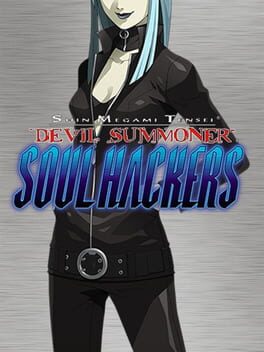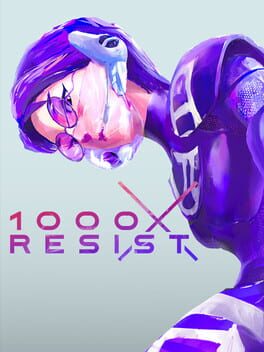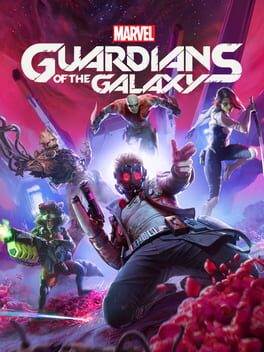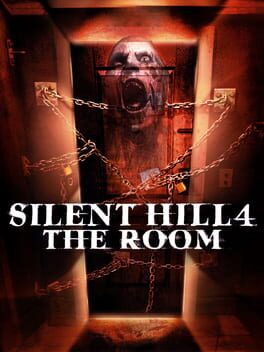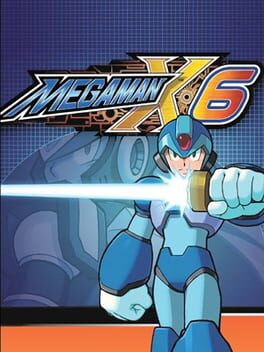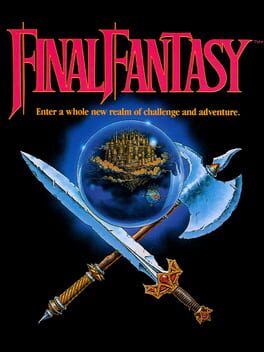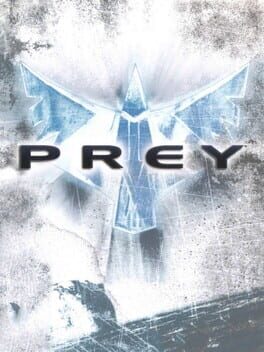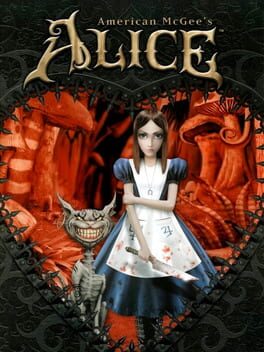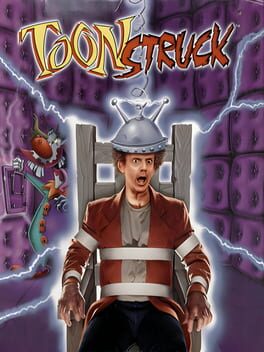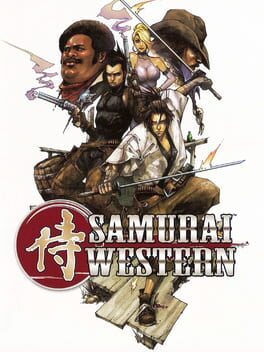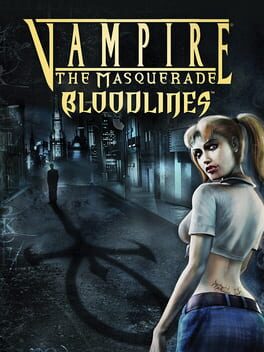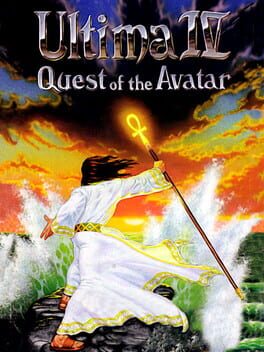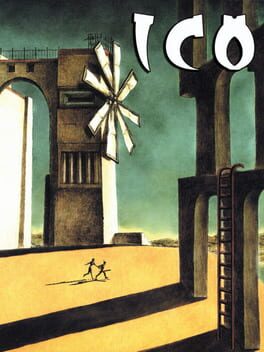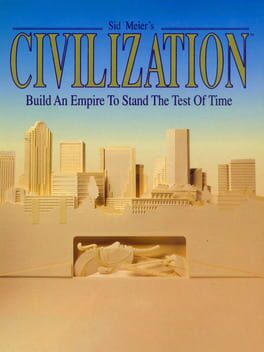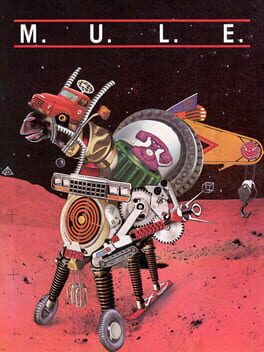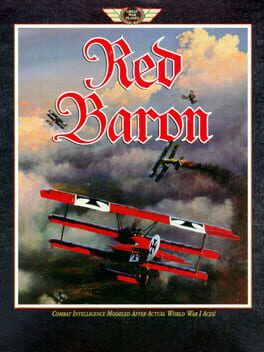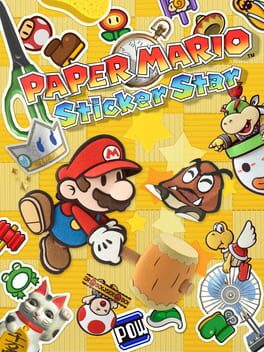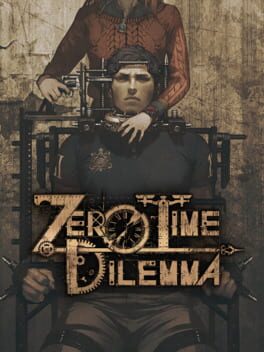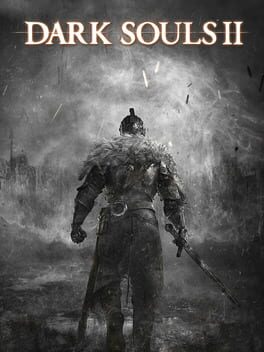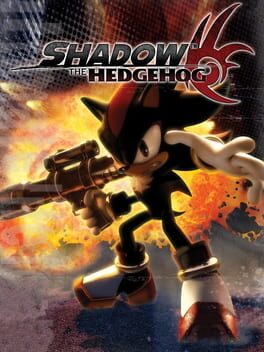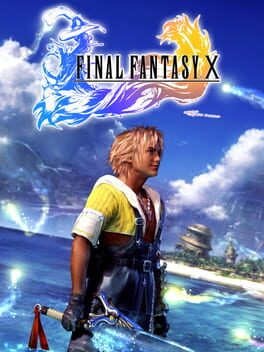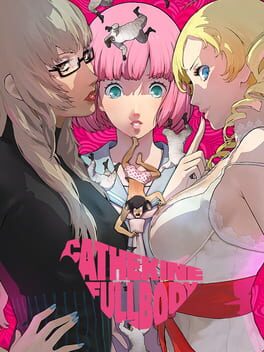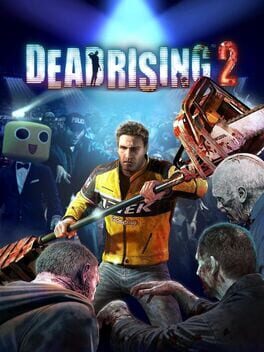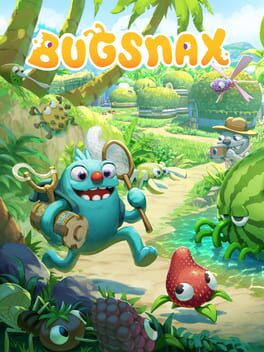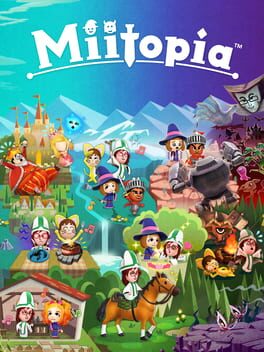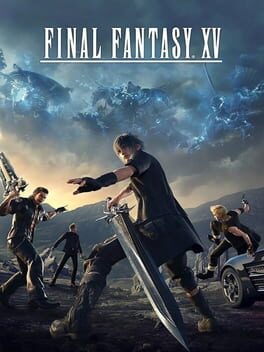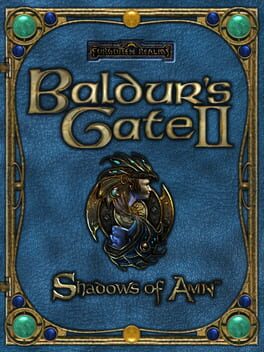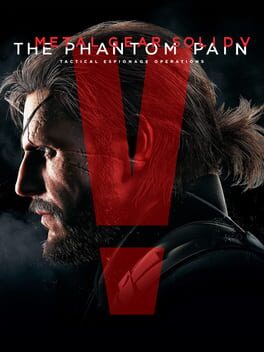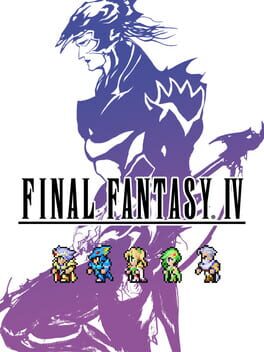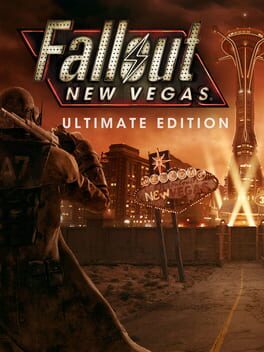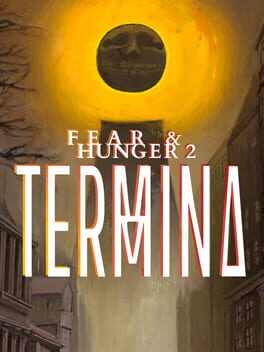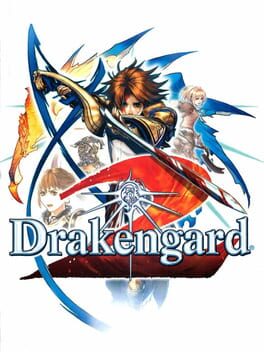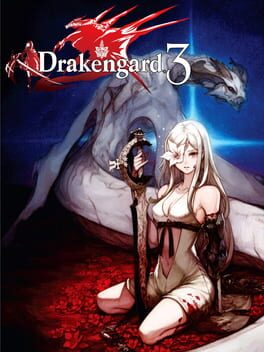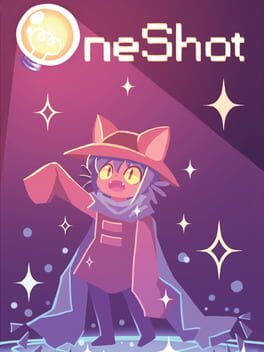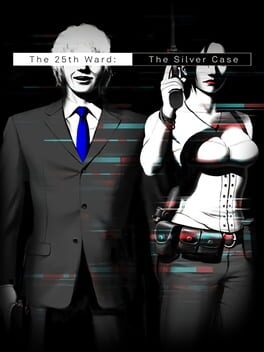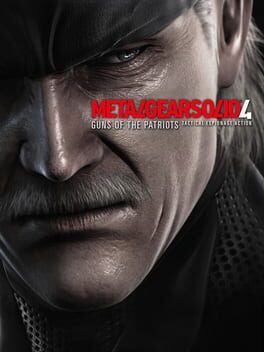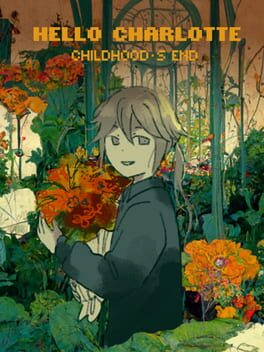Moister
2203 reviews liked by Moister
DEFCON
2006
1000xResist
2024
Fallout: New Vegas
2010
Quality superhero films may be the norm these days, but in hindsight it’s strange how little we’ve gotten in the way of narratively-equivalent video games. Sure, there’s the occasionally great movie tie-in(+), but outside of the Arkham and Spider-Man series, you could count on one hand the number of solid story-driven titles out there.
It’s a shame, then, that Guardians of the Galaxy reportedly underperformed as it’s the kind of game I felt the industry really needed with regards to the comic book genre, and what makes it particularly amazing is how it manages to craft its own path whilst still staying true to the characterizations of the eponymous film. See, compared to Batman and Spider-Man, where their numerous iterations have made audiences open to new versions, Guardians is different in that most people are liable to only knowing the characters from James Gunn’s flick, and so the writers at Eidos-Montréal had a tough task before them: how do we create our own version of the team that concurrently pays homage to the comics without alienating any cinephiles?
Well, I’m not sure what their thought process entailed, but the end result was taking the core personalities personified in the movie and combining it with an original backstory, namely one in which every Guardian was a veteran of a conflict known as the Galactic War. Each member played a different role during the war, and the way such information is divulged over the course of the game goes a long way towards distinguishing its cast from their cinematic interactions. Yes, Quill is still comedic, Drax a literalist, Rocket a loudmouth, etc…etc…, but their experiences have led to them developing varied demeanors towards society as a whole. Gamora, for example, seeks some form of redemption for her support of Thanos; Rocket & Groot are purely about surviving, and Drax hunts for honor over his inability to protect his clan.
Found familyhood was cited as a major inspiration behind the tale, and I can safely say the writers successfully accomplished this task via the sheer amount of dialogue they crafted for the game. Seriously, fans of the Mass Effect or Red Dead series may find themselves in awe at the innumerable conversations typed-up for every chapter; convos that go a long way towards establishing relationships, lore, scenarios, and general camaraderie. Hearing Drax repeatedly call Gamora an assassin, seeing everyone snicker at Quill’s attempts at self-aggrandizement, or catching Rocket’s reactions to Groot’s various statements truly render the Guardians as three-dimensional people who’ve had a lot of laughs & cries along the way. No matter their disagreements, there’s a basic-level of respect amongst each peer, and while you occasionally have the option to interject with a unique response, both choices ultimately contribute to that looming amity.
I’m not exaggerating when I say GOTG has a ton of impromptu chatter -- your main hub of a ship spouts the lion’s share of these, with characters either speaking to each other out of their own volition, or engaging in ones triggered by unique items found during missions. Both moulds give-off a big Mass Effect vibe, and I was constantly amazed whenever I discerned some new interaction, whether it be petty, dramatic, or (in most cases) downright amusing.
None of this is even taking into consideration the outside convos in which characters often shout unique battle cries or make special observations should you be standing in a specific place. One of the best things GOTG does is resolve TLOU Problem I’ve had with certain narrative-driven games wherein your hero is meant to progress forward in stark contrast to the gameplay encouraging dicking around; it breaks the game’s immersion to see your next objective or companion kindly wait on you as you do whatever it is you feel like doing. By having the other Guardians actually remark on Quill’s strays off the beaten path, it goes a long way towards maintaining GOTG’s atmosphere.
In some ways, all the dialogue can get a little overwhelming, particularly for people (like myself) who suffer from FOMO: there’s a solid chance you’ll unintentionally cut-off or outright miss at least 15 percent of the optional scripting here, and that’s just something you’ll have to contend with should you wish to play the game.
Of course, no one would’ve cared about these palavers had the voice acting not been good, and that’s thankfully not the case here. Guardians of the Galaxy is interesting in that it opted for an entirely unknown cast -- I consider myself pretty well-versed in the voice acting industry, and I honestly only recognized a single name here (Andreas Apergis, and even then that was mainly because of his recurrent roles in the Assassin’s Creed franchise). That said, their unknownness doesn’t impede the project in any way as they are all terrific, embodying their characters fully as they wander amidst a full spectrum of emotions. Like I noted with the script, there was a difficult balancing act required in terms of making sure these takes on the Guardians were both similar and dissimilar from their movie counterparts, and all the actors proficiently did-so whilst rendering their characters their own. All cards on the table, I actually preferred most of these takes over the celebrityhood of James Gunn’s enterprise: Jason Cavalier grants Drax far more tragic introspective depth than Bautista ever did; Alex Weiner removes that atrocious Gilbert Gottfried inflection Cooper gave his Rocket (RIP Gottfried, but I was not a fan); and even Robert Montcalm manages to provide Groot a more-variegated personality than the one Diesel was limited to.
Given the strong vocal bounce between the characters (Rocket & Groot standing out as the best), GOTG deserves further acclamation for its robust ADR direction. See, there’s a good chance the actors did not record their lines together, and so their ability to resound like they had good chemistry owes a lot of fealty to the narrative directors for providing the appropriate context for each delivery.
There were only two voices I had issues with, the first being Jon McLaren’s Star-Lord. This may come as a surprise given that Quill is the lead protagonist and only playable character, but I did not like the inherent stoner-esque gravel McLaren provided him. Don’t get me wrong, the performance is otherwise solid; however, more often than not, I found myself thinking of a Seth Green character over a Marvel superhero.
The second is Emmanuelle Lussier-Martinez’s Mantis, though I don’t hold this against her as it’s evident the writers were going for this crazed NPC wrought with constant knowledge: the problem is, rather than do a Dr. Manhattan-type performance, they opted to portray her like Omi in that episode of Xiaolin Showdown where he gets infused with factoids from the Fountain of Hui (and yes, for the uninitiated, that’s a bad thing when done in spades).
Regardless, everyone’s performance was successfully transposed into the game via top-quality facial capture, rendering their squints and frowns through phenomenal animations. When you visibly see pain and happiness on your characters’ faces, it does a lot for the execution of the overarching story.
On that note, the narrative has its pros and cons. As I harped on earlier, the scribes do a phenomenal job developing the relationships between the Guardians: while this version of the team is already well-acquainted, it still takes place in the early part of their formation, meaning this is where you see them go from world-weary associates to the makeshift family we all know-and-love. In terms of the grand adventure you’re set out on (i.e., the campaign those interactions fall under), your mileage is going to vary. The entire game is full of heart, and there are some emotional moments that genuinely touched me to my core, but getting to those moments means engaging in standard superhero schlock wherein you’re charged with saving the universe from despair. Yes, other comic book games like Arkham Asylum and Shattered Dimensions indulged in similar premises, but I’d argue the difference is those titles were carried by their villains and a sense of mystery towards uncovering said villain’s plot. GOTG’s problem is that it’s upfront about its secrets from the get-go and, more importantly, lacks memorable antagonists: the main one, in particular, being a generic evil shroud akin to such classics as the Rising Darkness from Constantine, Galactus from Tim Story’s Fantastic 4, and Smallville’s version of Darkseid (yes, this is sarcasm). A couple of the secondary adversaries like Lady Hellbender fare a bit better, but, as they’re not a constant presence, this is a game you’ll largely be playing for the protagonists.
For the record, I had a good time with the story -- it’s well-told, has minimal pacing issues (save the end++), and would’ve worked well as an officially-published graphic novel. It’s just, post-completion, you won’t recall the majority of the chapters (the interactions within, yes, but not the events).
Thanks to James Gunn, the GOTG franchise is also permanently associated with comedy, and on that front the game works quite well. Whereas Gunn’s films were more about gags and one-liners, Eidos goes for a more situational style-of-humor wherein you’re witnessing how a coterie of charismatic individuals with sharp comportments would behave when placed in an enclosed dwelling. I wouldn’t call it laugh-out-loud, but more-so chuckle humor: you’ll smile and giggle like a schoolgirl, yet rarely twist your stomach out from hooting, and I think the tactic works great. There are times when the game tries to mimic the Gunn route; however, those scenes fall very flat and are thankfully few-and-far between(+++).
Of course, Arkham and Spider-Man didn’t get popular solely from their narratives or witticism: they had phenomenal gameplay systems to back everything up, and on that note, Guardians of the Galaxy is pretty dang good. It’s interesting that I made the comparison to Mass Effect earlier as the similarities between the two even extend to combat: you control Quill while his comrades are AI-guided, each of whom can be called upon to use a special attack against a foe or foes. Quill himself is equipped with his fists, dual blasters (primed with elemental shots obtained during set story beats), and a batch of special moves ranging from electro mines to the iconic jet boots. Much like the original Mass Effect, ammo for every tool has been replaced with a cooldown period, and there is no cover: if you’re not on the run, you’re likely to get swamped quickly (similar to Control).
With the exception of the final slot (garnered through story progression), every Guardian’s super attack has to be unlocked by way of good old-fashioned experience points gathered from combat scenarios, lending the game a bit of a lite-RPG schematic. Supplementing this are a heap of 15 additional perks players can add to Quill’s stockpile via select work benches scattered throughout most chapters, the only catch being that you have to scavenge the requisite components in the world (akin to TLOU).
Overall, fighting is fun if a bit repetitive - not every Guardian attack is practical, and their icons (save the final one) weren’t distinguished enough to avoid confusion between the useful and the useless. It also suffers from being too easy for its own good due to a number of mechanisms present even on the hardest difficulty: the option to do a one-hit KO team combo(++++) once an enemy’s health has been whittled down enough; the Huddle -- a unique feature wherein Quill can pause the skirmish, call over his team, and give everyone (including himself) an attack boost/HP recovery; and a third one I’m going to avoid stating for fear of spoilers(+++++).
Besides brawling, you’ll be conducting basic exploration involving simple puzzles that solely come down to figuring out which Guardian to employ against which obstacle. It’s a shame more wasn’t (or wasn’t able to be) done as the novel abilities specific to each alien could’ve led to some really cool environmental enigmas. In fact, part of me wonders if that was the original plan as there’s an immersive sim aspect here in the form of Quill being able to leap around and ascend most structures, only for it to not lead anywhere.
That said, the minimal scavenging didn’t bother me too much in light of how gorgeous everything is. This is one of those titles where you can tell no expense was spared, and that probably had to do with Square and Eidos’s well-intentioned belief that the GOTG IP was fertile enough for mass profit.
Well, we’ll talk about the reasons why the game faltered later, but for now, let’s at least appreciate the sheer production value on display. Guardians is interesting in that it occupies that same Jim Lee aesthetic Arkham Asylum imbibed apropos to toeing the line between photorealism and comic book poppiness (i.e., the game is liable to aging better than some of its eighth gen brethren). When it comes to the graphics, their beauty originates from three major areas: clothing, character modeling, and texture streaming.
With the first, GOTG arguably has the greatest textile work I have ever seen in a video game -- courtesy of the camera mode, I was able to zoom-in on various suits, and not a single one was shortchanged as far as detail or composition. From the individual stitches on Star-Lord’s jacket to the wear-and-tear knee creases of security guard latex to the overlapping of plate metal & linen on Gamora’s byrnie, there were so many wonderful subtleties in the wardrobe department that to list them all would drag this review out by several pages.
That same effort was continued over into the modeling, where humans and aliens alike boast pores, wrinkles, and follicles upon closer inspection. Ironically, though, it’s Groot and Rocket who deserve the most acclaim if only for the virtuosity of their respective hides: being able to glean splintered bark and singular bristles of fur on each member’s skin respectively was absolutely mind-blowing when you consider just how much easier it would’ve been to draw a single layer (what TellTale did back in 2017).
Environments maintain this quality by matching the diversity with appropriate texturization. Eidos leaned heavily on the comics and their imagination when devising the areas to throw players into, and while some of them are admittedly a bit standard (the red deserts of Lamentis; the frostbitten scape of Maklua IV), the majority do take you to some pretty sweet locales ripe with filled-in gubbins and walling. The golden-lacquered Sacrosanct and magenta-strewn matter of the Quarantine Zone are predisposed to being fan favorites, but for my own tea I personally adored the cyberpunk vibes of Knowhere where sleaze, soft lighting, neon signs, and lite-smog blended together into an evocative site.
My last major bastion of praise goes towards the personalization facets, and not in the usual sense of the term. In the past, I’ve praised devs for crafting unique spaces you could tell were tenanted by a standalone persona -- what GOTG has done is take that template and extrapolate it for the mainline species here. Heading into a Kree ship, for instance, gifts you a shelf of books with Kree rune titles, clean pipes with the Nova Corp insignia, and a general sense of orderliness. Compare this to Lady Hellbender’s gladiatorial planet, chockful of broken glass, spilled beer, and cobbled food. As you explore alien terrain, you really get a sense of prior lives and civilizations that mysteriously vanished over the course of evolution, leaving behind such remnants as hulking monoliths, structures, and carvings. It’s all superbly done.
Other miscellaneous graphical feats include unique lunge animations for each Guardian when jumping gaps, cold air breaths in subzero climates, natural finger movements when rotating examinable objects, Quill putting his hands up when approaching fiery pits, reflective surfaces from puddles, gold tiling, and tiny mirrors; the pose algorithm during 1-on-1 counsels being very organic (compared to Valhalla’s constant arm-crossing), character subtitle names boasting different colors, how Quill turns his head towards the current speaker, and, most vivid of all, the entirety of Kosmo -- this is a psychic dog you’ll infrequently run into during the course of the game, and I have to imagine someone at Eidos either grew up with golden retrievers or put mo-cap dots around a real one as, as any dog owner will tell you, everything about his canine behavior was pitch perfect: the constantly darting stare, twirling of his tale, twitching of his eyebrows, the effervescent panting -- for all his ESP, he may ironically go down as the most accurate dog in video game history.
I did have some complaints, but they concerned relatively minor stuff like the lack of footprints on powdery exteriors, Groots root bridges clipping the ground, and Quill occasionally acting jittery during dialogues.
SFX, unfortunately, was the sole area undercompensated by the devs in that it’s inconsistent to a trained ear. For starters, not much went in the way of footstep differentiation, with ice & metallic platforms, and beds & tile floors bearing the same din as their paired twin. There were times where I’d hear the crunch of snow pellets on surfaces they were minimally scattered on, while the bulk of each Guardian’s abilities (save Quill’s) were sonorously indistinguishable. Effort did go into individuating every team member’s movements, and jumps did come programmed with that distinctiveness I sought; however, it was otherwise rather basic for a game of this caliber. Don’t get me wrong, nothing’s distracting, you just won’t be immersed in any planet’s auralscape.
Finally, the OST by Richard Jacques (which, by the way, was much harder to find than it should have been courtesy of Eidos opting to promote the licensed mixtape instead) is solid, if a little derivative. Let me explain so I don’t come off as pretentious or condescending: ever since Alan Silvestri pioneered that massive symphonic sound in The Avengers, a lot of Marvel-based composers have incorporated aspects of that into their scores. It’s certainly a wise decision with regards to maintaining a familiarity to audiences, but it does come at the cost of that uniqueness we used to get in superhero music pre-Avengers. As a result, you’ll hear a lot of recognizable motifs despite the soundtrack being its own set of arrangements -- I’m talking electric guitar riffs, Greek-inspired choral harmonies, pounding brass, and crescendos galore. Thankfully, Jacques does give us one of the best comic book themes to come out in a while; however, in respect to the rest of his compositions, they’re good at the expense of not rising to that same level of memorability.
Per my earlier remark, Eidos spent a lot of money licensing popular 80s hits that you can either manually play on the ship or randomly hear during those aforestated Huddles. I know there have been, and will be, a lot of people who enjoy the substance, but part of me wonders whether or not it was a good idea. As I keep harping on, GOTG was clearly an expensive game to make, and considering how little you’ll hear the music (being off-ship/infrequently using Huddles), it begs the question of how much money could’ve been saved instead by hiring a band to create 80s-inspired tunes.
Then again, maybe it wouldn’t have helped much considering most critics blame the poor reception of the Avengers game for GOTG’s financial disappointment. It’s a tragically valid connection, and combined with the game not releasing adjacent to any of the mainline movies, it sadly wasn’t able to stand on its own. Zack Snyder got a lot of sh!t for his flavor of the week comment years ago, but the fact of the matter is he was right to an extent: certain characters only achieved profitability because they were specific versions crafted in the Marvel Cinematic Universe. Outside of that ecosystem, it was always going to be a struggle for any hero not named Batman, Spider-Man, or Wolverine to succeed.
It’s been almost three years since GOTG released, and with no signs of a sequel, we have to accept the game for the unique specimen it was. It’s rare we get superhero games of this quality, and will be even rarer as the MCU goes through a post-Bubble period, but let it be known that, for all my complaints, this was an exquisite product well-worth your money.
NOTES
-Before addressing anything else, I should mention that there is a choice system in the game, but it’s more akin to the first Witcher or Deus Ex wherein it impacts the flow of events rather than causing multiple endings. When it involved hard gameplay, I was fine with it; however, there was an instance in one of the story climaxes where it ruined the moment (you’ll know it when you see it).
+Spider-Man 2, X-Men Origins: Wolverine, Batman Begins, and, heck, I actually liked the Iron Man one.
++Without spoiling, basically it indulges in the cliche fake-out tactic that’s been overdone by this point. You don’t even get a proper end boss, though not that it would’ve mattered as the boss fights here are mediocre: not Arkham Asylum bad, but arguably lower than Insomniac’s first Spider-Man.
+++The worst involves a scene where Quill has to do improvised karaoke (trust me, you’ll know it when you see it).
++++The finishers themselves aren’t that exciting, being a series of hard cuts of each Guardian doing an attack on the target. A little strange considering standard melee combos often result in your Alien brethren actually conducting a coordinated strike alongside Quill.
+++++All I’ll say is it involves Groot’s final unlockable power, its essence simultaneously diminishing a certain “emotional” story beat.
-Similar to Metroid Prime, Quill’s visor enables him to examine enemies and environs for pieces of supplemental data, but the game unfortunately doesn’t pause background conversations for the latter, meaning you’re forced to read them quickly lest you get interrupted.
-The writers created their own profanity for the characters to gleefully indulge in.
-Why does Mantis have Hela’s garb?
-Tell me Gamora’s VA doesn’t sound like Leela from Futurama?
-There’s a glowing red digital billboard in Knowhere that displays ads for a McDonald’s rip-off. I bring this up because I actually saw a similar hoarding in Shinjuku albeit for a Wendy’s, making me wonder if it was inspired by that?
It’s a shame, then, that Guardians of the Galaxy reportedly underperformed as it’s the kind of game I felt the industry really needed with regards to the comic book genre, and what makes it particularly amazing is how it manages to craft its own path whilst still staying true to the characterizations of the eponymous film. See, compared to Batman and Spider-Man, where their numerous iterations have made audiences open to new versions, Guardians is different in that most people are liable to only knowing the characters from James Gunn’s flick, and so the writers at Eidos-Montréal had a tough task before them: how do we create our own version of the team that concurrently pays homage to the comics without alienating any cinephiles?
Well, I’m not sure what their thought process entailed, but the end result was taking the core personalities personified in the movie and combining it with an original backstory, namely one in which every Guardian was a veteran of a conflict known as the Galactic War. Each member played a different role during the war, and the way such information is divulged over the course of the game goes a long way towards distinguishing its cast from their cinematic interactions. Yes, Quill is still comedic, Drax a literalist, Rocket a loudmouth, etc…etc…, but their experiences have led to them developing varied demeanors towards society as a whole. Gamora, for example, seeks some form of redemption for her support of Thanos; Rocket & Groot are purely about surviving, and Drax hunts for honor over his inability to protect his clan.
Found familyhood was cited as a major inspiration behind the tale, and I can safely say the writers successfully accomplished this task via the sheer amount of dialogue they crafted for the game. Seriously, fans of the Mass Effect or Red Dead series may find themselves in awe at the innumerable conversations typed-up for every chapter; convos that go a long way towards establishing relationships, lore, scenarios, and general camaraderie. Hearing Drax repeatedly call Gamora an assassin, seeing everyone snicker at Quill’s attempts at self-aggrandizement, or catching Rocket’s reactions to Groot’s various statements truly render the Guardians as three-dimensional people who’ve had a lot of laughs & cries along the way. No matter their disagreements, there’s a basic-level of respect amongst each peer, and while you occasionally have the option to interject with a unique response, both choices ultimately contribute to that looming amity.
I’m not exaggerating when I say GOTG has a ton of impromptu chatter -- your main hub of a ship spouts the lion’s share of these, with characters either speaking to each other out of their own volition, or engaging in ones triggered by unique items found during missions. Both moulds give-off a big Mass Effect vibe, and I was constantly amazed whenever I discerned some new interaction, whether it be petty, dramatic, or (in most cases) downright amusing.
None of this is even taking into consideration the outside convos in which characters often shout unique battle cries or make special observations should you be standing in a specific place. One of the best things GOTG does is resolve TLOU Problem I’ve had with certain narrative-driven games wherein your hero is meant to progress forward in stark contrast to the gameplay encouraging dicking around; it breaks the game’s immersion to see your next objective or companion kindly wait on you as you do whatever it is you feel like doing. By having the other Guardians actually remark on Quill’s strays off the beaten path, it goes a long way towards maintaining GOTG’s atmosphere.
In some ways, all the dialogue can get a little overwhelming, particularly for people (like myself) who suffer from FOMO: there’s a solid chance you’ll unintentionally cut-off or outright miss at least 15 percent of the optional scripting here, and that’s just something you’ll have to contend with should you wish to play the game.
Of course, no one would’ve cared about these palavers had the voice acting not been good, and that’s thankfully not the case here. Guardians of the Galaxy is interesting in that it opted for an entirely unknown cast -- I consider myself pretty well-versed in the voice acting industry, and I honestly only recognized a single name here (Andreas Apergis, and even then that was mainly because of his recurrent roles in the Assassin’s Creed franchise). That said, their unknownness doesn’t impede the project in any way as they are all terrific, embodying their characters fully as they wander amidst a full spectrum of emotions. Like I noted with the script, there was a difficult balancing act required in terms of making sure these takes on the Guardians were both similar and dissimilar from their movie counterparts, and all the actors proficiently did-so whilst rendering their characters their own. All cards on the table, I actually preferred most of these takes over the celebrityhood of James Gunn’s enterprise: Jason Cavalier grants Drax far more tragic introspective depth than Bautista ever did; Alex Weiner removes that atrocious Gilbert Gottfried inflection Cooper gave his Rocket (RIP Gottfried, but I was not a fan); and even Robert Montcalm manages to provide Groot a more-variegated personality than the one Diesel was limited to.
Given the strong vocal bounce between the characters (Rocket & Groot standing out as the best), GOTG deserves further acclamation for its robust ADR direction. See, there’s a good chance the actors did not record their lines together, and so their ability to resound like they had good chemistry owes a lot of fealty to the narrative directors for providing the appropriate context for each delivery.
There were only two voices I had issues with, the first being Jon McLaren’s Star-Lord. This may come as a surprise given that Quill is the lead protagonist and only playable character, but I did not like the inherent stoner-esque gravel McLaren provided him. Don’t get me wrong, the performance is otherwise solid; however, more often than not, I found myself thinking of a Seth Green character over a Marvel superhero.
The second is Emmanuelle Lussier-Martinez’s Mantis, though I don’t hold this against her as it’s evident the writers were going for this crazed NPC wrought with constant knowledge: the problem is, rather than do a Dr. Manhattan-type performance, they opted to portray her like Omi in that episode of Xiaolin Showdown where he gets infused with factoids from the Fountain of Hui (and yes, for the uninitiated, that’s a bad thing when done in spades).
Regardless, everyone’s performance was successfully transposed into the game via top-quality facial capture, rendering their squints and frowns through phenomenal animations. When you visibly see pain and happiness on your characters’ faces, it does a lot for the execution of the overarching story.
On that note, the narrative has its pros and cons. As I harped on earlier, the scribes do a phenomenal job developing the relationships between the Guardians: while this version of the team is already well-acquainted, it still takes place in the early part of their formation, meaning this is where you see them go from world-weary associates to the makeshift family we all know-and-love. In terms of the grand adventure you’re set out on (i.e., the campaign those interactions fall under), your mileage is going to vary. The entire game is full of heart, and there are some emotional moments that genuinely touched me to my core, but getting to those moments means engaging in standard superhero schlock wherein you’re charged with saving the universe from despair. Yes, other comic book games like Arkham Asylum and Shattered Dimensions indulged in similar premises, but I’d argue the difference is those titles were carried by their villains and a sense of mystery towards uncovering said villain’s plot. GOTG’s problem is that it’s upfront about its secrets from the get-go and, more importantly, lacks memorable antagonists: the main one, in particular, being a generic evil shroud akin to such classics as the Rising Darkness from Constantine, Galactus from Tim Story’s Fantastic 4, and Smallville’s version of Darkseid (yes, this is sarcasm). A couple of the secondary adversaries like Lady Hellbender fare a bit better, but, as they’re not a constant presence, this is a game you’ll largely be playing for the protagonists.
For the record, I had a good time with the story -- it’s well-told, has minimal pacing issues (save the end++), and would’ve worked well as an officially-published graphic novel. It’s just, post-completion, you won’t recall the majority of the chapters (the interactions within, yes, but not the events).
Thanks to James Gunn, the GOTG franchise is also permanently associated with comedy, and on that front the game works quite well. Whereas Gunn’s films were more about gags and one-liners, Eidos goes for a more situational style-of-humor wherein you’re witnessing how a coterie of charismatic individuals with sharp comportments would behave when placed in an enclosed dwelling. I wouldn’t call it laugh-out-loud, but more-so chuckle humor: you’ll smile and giggle like a schoolgirl, yet rarely twist your stomach out from hooting, and I think the tactic works great. There are times when the game tries to mimic the Gunn route; however, those scenes fall very flat and are thankfully few-and-far between(+++).
Of course, Arkham and Spider-Man didn’t get popular solely from their narratives or witticism: they had phenomenal gameplay systems to back everything up, and on that note, Guardians of the Galaxy is pretty dang good. It’s interesting that I made the comparison to Mass Effect earlier as the similarities between the two even extend to combat: you control Quill while his comrades are AI-guided, each of whom can be called upon to use a special attack against a foe or foes. Quill himself is equipped with his fists, dual blasters (primed with elemental shots obtained during set story beats), and a batch of special moves ranging from electro mines to the iconic jet boots. Much like the original Mass Effect, ammo for every tool has been replaced with a cooldown period, and there is no cover: if you’re not on the run, you’re likely to get swamped quickly (similar to Control).
With the exception of the final slot (garnered through story progression), every Guardian’s super attack has to be unlocked by way of good old-fashioned experience points gathered from combat scenarios, lending the game a bit of a lite-RPG schematic. Supplementing this are a heap of 15 additional perks players can add to Quill’s stockpile via select work benches scattered throughout most chapters, the only catch being that you have to scavenge the requisite components in the world (akin to TLOU).
Overall, fighting is fun if a bit repetitive - not every Guardian attack is practical, and their icons (save the final one) weren’t distinguished enough to avoid confusion between the useful and the useless. It also suffers from being too easy for its own good due to a number of mechanisms present even on the hardest difficulty: the option to do a one-hit KO team combo(++++) once an enemy’s health has been whittled down enough; the Huddle -- a unique feature wherein Quill can pause the skirmish, call over his team, and give everyone (including himself) an attack boost/HP recovery; and a third one I’m going to avoid stating for fear of spoilers(+++++).
Besides brawling, you’ll be conducting basic exploration involving simple puzzles that solely come down to figuring out which Guardian to employ against which obstacle. It’s a shame more wasn’t (or wasn’t able to be) done as the novel abilities specific to each alien could’ve led to some really cool environmental enigmas. In fact, part of me wonders if that was the original plan as there’s an immersive sim aspect here in the form of Quill being able to leap around and ascend most structures, only for it to not lead anywhere.
That said, the minimal scavenging didn’t bother me too much in light of how gorgeous everything is. This is one of those titles where you can tell no expense was spared, and that probably had to do with Square and Eidos’s well-intentioned belief that the GOTG IP was fertile enough for mass profit.
Well, we’ll talk about the reasons why the game faltered later, but for now, let’s at least appreciate the sheer production value on display. Guardians is interesting in that it occupies that same Jim Lee aesthetic Arkham Asylum imbibed apropos to toeing the line between photorealism and comic book poppiness (i.e., the game is liable to aging better than some of its eighth gen brethren). When it comes to the graphics, their beauty originates from three major areas: clothing, character modeling, and texture streaming.
With the first, GOTG arguably has the greatest textile work I have ever seen in a video game -- courtesy of the camera mode, I was able to zoom-in on various suits, and not a single one was shortchanged as far as detail or composition. From the individual stitches on Star-Lord’s jacket to the wear-and-tear knee creases of security guard latex to the overlapping of plate metal & linen on Gamora’s byrnie, there were so many wonderful subtleties in the wardrobe department that to list them all would drag this review out by several pages.
That same effort was continued over into the modeling, where humans and aliens alike boast pores, wrinkles, and follicles upon closer inspection. Ironically, though, it’s Groot and Rocket who deserve the most acclaim if only for the virtuosity of their respective hides: being able to glean splintered bark and singular bristles of fur on each member’s skin respectively was absolutely mind-blowing when you consider just how much easier it would’ve been to draw a single layer (what TellTale did back in 2017).
Environments maintain this quality by matching the diversity with appropriate texturization. Eidos leaned heavily on the comics and their imagination when devising the areas to throw players into, and while some of them are admittedly a bit standard (the red deserts of Lamentis; the frostbitten scape of Maklua IV), the majority do take you to some pretty sweet locales ripe with filled-in gubbins and walling. The golden-lacquered Sacrosanct and magenta-strewn matter of the Quarantine Zone are predisposed to being fan favorites, but for my own tea I personally adored the cyberpunk vibes of Knowhere where sleaze, soft lighting, neon signs, and lite-smog blended together into an evocative site.
My last major bastion of praise goes towards the personalization facets, and not in the usual sense of the term. In the past, I’ve praised devs for crafting unique spaces you could tell were tenanted by a standalone persona -- what GOTG has done is take that template and extrapolate it for the mainline species here. Heading into a Kree ship, for instance, gifts you a shelf of books with Kree rune titles, clean pipes with the Nova Corp insignia, and a general sense of orderliness. Compare this to Lady Hellbender’s gladiatorial planet, chockful of broken glass, spilled beer, and cobbled food. As you explore alien terrain, you really get a sense of prior lives and civilizations that mysteriously vanished over the course of evolution, leaving behind such remnants as hulking monoliths, structures, and carvings. It’s all superbly done.
Other miscellaneous graphical feats include unique lunge animations for each Guardian when jumping gaps, cold air breaths in subzero climates, natural finger movements when rotating examinable objects, Quill putting his hands up when approaching fiery pits, reflective surfaces from puddles, gold tiling, and tiny mirrors; the pose algorithm during 1-on-1 counsels being very organic (compared to Valhalla’s constant arm-crossing), character subtitle names boasting different colors, how Quill turns his head towards the current speaker, and, most vivid of all, the entirety of Kosmo -- this is a psychic dog you’ll infrequently run into during the course of the game, and I have to imagine someone at Eidos either grew up with golden retrievers or put mo-cap dots around a real one as, as any dog owner will tell you, everything about his canine behavior was pitch perfect: the constantly darting stare, twirling of his tale, twitching of his eyebrows, the effervescent panting -- for all his ESP, he may ironically go down as the most accurate dog in video game history.
I did have some complaints, but they concerned relatively minor stuff like the lack of footprints on powdery exteriors, Groots root bridges clipping the ground, and Quill occasionally acting jittery during dialogues.
SFX, unfortunately, was the sole area undercompensated by the devs in that it’s inconsistent to a trained ear. For starters, not much went in the way of footstep differentiation, with ice & metallic platforms, and beds & tile floors bearing the same din as their paired twin. There were times where I’d hear the crunch of snow pellets on surfaces they were minimally scattered on, while the bulk of each Guardian’s abilities (save Quill’s) were sonorously indistinguishable. Effort did go into individuating every team member’s movements, and jumps did come programmed with that distinctiveness I sought; however, it was otherwise rather basic for a game of this caliber. Don’t get me wrong, nothing’s distracting, you just won’t be immersed in any planet’s auralscape.
Finally, the OST by Richard Jacques (which, by the way, was much harder to find than it should have been courtesy of Eidos opting to promote the licensed mixtape instead) is solid, if a little derivative. Let me explain so I don’t come off as pretentious or condescending: ever since Alan Silvestri pioneered that massive symphonic sound in The Avengers, a lot of Marvel-based composers have incorporated aspects of that into their scores. It’s certainly a wise decision with regards to maintaining a familiarity to audiences, but it does come at the cost of that uniqueness we used to get in superhero music pre-Avengers. As a result, you’ll hear a lot of recognizable motifs despite the soundtrack being its own set of arrangements -- I’m talking electric guitar riffs, Greek-inspired choral harmonies, pounding brass, and crescendos galore. Thankfully, Jacques does give us one of the best comic book themes to come out in a while; however, in respect to the rest of his compositions, they’re good at the expense of not rising to that same level of memorability.
Per my earlier remark, Eidos spent a lot of money licensing popular 80s hits that you can either manually play on the ship or randomly hear during those aforestated Huddles. I know there have been, and will be, a lot of people who enjoy the substance, but part of me wonders whether or not it was a good idea. As I keep harping on, GOTG was clearly an expensive game to make, and considering how little you’ll hear the music (being off-ship/infrequently using Huddles), it begs the question of how much money could’ve been saved instead by hiring a band to create 80s-inspired tunes.
Then again, maybe it wouldn’t have helped much considering most critics blame the poor reception of the Avengers game for GOTG’s financial disappointment. It’s a tragically valid connection, and combined with the game not releasing adjacent to any of the mainline movies, it sadly wasn’t able to stand on its own. Zack Snyder got a lot of sh!t for his flavor of the week comment years ago, but the fact of the matter is he was right to an extent: certain characters only achieved profitability because they were specific versions crafted in the Marvel Cinematic Universe. Outside of that ecosystem, it was always going to be a struggle for any hero not named Batman, Spider-Man, or Wolverine to succeed.
It’s been almost three years since GOTG released, and with no signs of a sequel, we have to accept the game for the unique specimen it was. It’s rare we get superhero games of this quality, and will be even rarer as the MCU goes through a post-Bubble period, but let it be known that, for all my complaints, this was an exquisite product well-worth your money.
NOTES
-Before addressing anything else, I should mention that there is a choice system in the game, but it’s more akin to the first Witcher or Deus Ex wherein it impacts the flow of events rather than causing multiple endings. When it involved hard gameplay, I was fine with it; however, there was an instance in one of the story climaxes where it ruined the moment (you’ll know it when you see it).
+Spider-Man 2, X-Men Origins: Wolverine, Batman Begins, and, heck, I actually liked the Iron Man one.
++Without spoiling, basically it indulges in the cliche fake-out tactic that’s been overdone by this point. You don’t even get a proper end boss, though not that it would’ve mattered as the boss fights here are mediocre: not Arkham Asylum bad, but arguably lower than Insomniac’s first Spider-Man.
+++The worst involves a scene where Quill has to do improvised karaoke (trust me, you’ll know it when you see it).
++++The finishers themselves aren’t that exciting, being a series of hard cuts of each Guardian doing an attack on the target. A little strange considering standard melee combos often result in your Alien brethren actually conducting a coordinated strike alongside Quill.
+++++All I’ll say is it involves Groot’s final unlockable power, its essence simultaneously diminishing a certain “emotional” story beat.
-Similar to Metroid Prime, Quill’s visor enables him to examine enemies and environs for pieces of supplemental data, but the game unfortunately doesn’t pause background conversations for the latter, meaning you’re forced to read them quickly lest you get interrupted.
-The writers created their own profanity for the characters to gleefully indulge in.
-Why does Mantis have Hela’s garb?
-Tell me Gamora’s VA doesn’t sound like Leela from Futurama?
-There’s a glowing red digital billboard in Knowhere that displays ads for a McDonald’s rip-off. I bring this up because I actually saw a similar hoarding in Shinjuku albeit for a Wendy’s, making me wonder if it was inspired by that?
Boy, this game is rough, gameplay was nuh uh...this is a hard game to love,I didn't mind the gameplay being eh on the first time, it was decent enough and I wanted to play it, it can be argued that the gameplay changes makes it more tense, therefore more challenging and scary..I kinda felt that and perhaps someone out there truly likes it. But most of it feels clunky and easy to abuse in a video game way, still its decent enough for me, I've played much worse, dealt with much worse feeling gameplay and seen much worse. Now...why doesn't my items stack up is something I can roll with, whatever but things like the Jaguars (oh I'm sorry, "Dogs") being literally warped to you as they attack in front of your eyes or how about...COME THE FUCK ON EILEEN, THERE ARE ABOUT 5 GHOSTS COMING AT ME THAT I CAN'T HURT IN ANYMORE WHO CAN HURT ME BIG TIME AND WE GOTTA GO TO THE NEXT DOOR, MOVE YOUR ASS! I also said this on that review and I'll say it here...if anyone ever complains about escort missions with Ashley on Resident Evil 4 (2005) make them play either this or Dead Rising 1, then they'll understand escort missions that truly suck, would you prefer one dumb escort over a shorter yet tough game? Or multiple idiots you have to escort over a bigger yet relatively easier game? Atleast the idiots going "FRANK! FRANK!" aren't mandatory though...anyway, this is a rough game to play...
But now, presentation! That's where the game stands on as it's legs in my opinion, cuz holy fuck this is a scary game, the presentation is scary, uncanny, chilling and in a way that mainstream titles don't often do it enough I imagine, atleast back then, I consider the intro to be a masterpiece on it's own for how unusual and strange it is, I love the mix of gameplay footage, cutscenes and some dedicated animations? used in it, it just hits the right notes for me. And yeah in my opinion this is the scariest and most disturbing of the Team Silent Hill games, that alone kept me going atleast. Also my theory on why Henry sounds "phoned in" or "distant" is because he's in a hazy state due to being locked in the room for so long, if you examine the kitchen he will say that he doesn't feel hungry even though he should, I got the implication is that he wasn't hungry since the room locked up on him, so why wouldn't this put him in a hazy half sleepy state too? Like he's here but also not here at the same time, atleast mindset wise, y'know? Of course this could not be intentional, maybe the guy just did phone in or direction did a poor job (tho I find that hard to believe especially after SH3) but considering how he looks, moves and acts, it feels quite intentional to me. And anyone else imagine Henry just being a blood covered corpse warped back to his bed whenever you get a Game Over screen? Also Walter Sullivan looks like Kurt Cobain
But now, presentation! That's where the game stands on as it's legs in my opinion, cuz holy fuck this is a scary game, the presentation is scary, uncanny, chilling and in a way that mainstream titles don't often do it enough I imagine, atleast back then, I consider the intro to be a masterpiece on it's own for how unusual and strange it is, I love the mix of gameplay footage, cutscenes and some dedicated animations? used in it, it just hits the right notes for me. And yeah in my opinion this is the scariest and most disturbing of the Team Silent Hill games, that alone kept me going atleast. Also my theory on why Henry sounds "phoned in" or "distant" is because he's in a hazy state due to being locked in the room for so long, if you examine the kitchen he will say that he doesn't feel hungry even though he should, I got the implication is that he wasn't hungry since the room locked up on him, so why wouldn't this put him in a hazy half sleepy state too? Like he's here but also not here at the same time, atleast mindset wise, y'know? Of course this could not be intentional, maybe the guy just did phone in or direction did a poor job (tho I find that hard to believe especially after SH3) but considering how he looks, moves and acts, it feels quite intentional to me. And anyone else imagine Henry just being a blood covered corpse warped back to his bed whenever you get a Game Over screen? Also Walter Sullivan looks like Kurt Cobain
Being on this website means I’m likely in proximity to the densest population of Silent Hill 4 fans per internet-mileage. It really cannot be overstated just how steep the dropoff in numbers is from the average SH fan to one that’s played, let alone likes SH4. And it’s not hard to see why, frankly. It’s a challenging experience even within its series’ context, which says a lot considering the comparison points. Honestly, outside of plot, previous experience with the series HARDLY prepares you - it’d be a lesson in frustration to approach this game with the same lens or expectations as SH1-3. Credit where it’s due though, that knotted, at times appalling temperament SH4 carries is attractive in its own way. While I’d hesitate to call it a wholly innocent victim of its reception, I still think it’s plenty deserving of this simmering enthusiasm which has cropped up on the outskirts of Silent Hill fandom.
Everyone who plays it can speak to the all-out bonkers audiovisuals - however, I do think that the malaise emanating off of this game extends beyond its surface. Despite being the most standoffish of the games, it’s still just as interested in character work as the others. After showing up and then some with the characters in their previous two games, it’s clear they were after something different here. It’s hard to put my finger on it, but there’s a muted, uncanny veil over the game which hadn’t been there previously. And these things in tandem lead to some odd bits, like Henry’s VA’s brand of anti-charisma choking the life out of every sentence from his mouth (he doesn't even speak that much to begin with), or the brief, cursory nature of the to-be sacrament encounters.
Does it fail itself in this regard? No, not necessarily, though the experience is undeniably colored by these things, and I’d be lying if I said it was batting .1000. It’s hard not to feel like this game’s pacing and presentation is a little more matted and coarse than the ones before it, and I’m sorry, but this pairs with the languid and sometimes even grating first half a little unpleasantly (and yes, I do acknowledge the irony of complaining about the first half of a game with a notoriously hellish second half, stick with me). I’ll put it this way: if there was ever an accomplice alongside the heavy emphasis on its half-baked combat that tanked this game’s reception, I’d point fingers in that direction. I’m trying to avoid outright comparisons to the previous games, but we are an ocean’s distance from Angela’s mirror scene or Heather’s gutting car ride speech as far as sauce goes.
And yet, it’s still not that easy to cast off, is it? I truly cannot stand the term “polish” (pah-lish, not poe-lish. I just rated The Witcher 3’s DLC highly, I’ll have you know) with regards to game quality, but in SH1-3’s case, I think you’d be hard-pressed to think of better examples for great parts being uninhibited for those experiencing them, and said clarity only helping the end result. SH4 is... simply a different beast.
There’s this omnipresent, dangerous intention fueling the game, infamously and most importantly with the apartment itself, that ends up making a hell of a case for the rest of it. Its entire being is one of pure malevolence, and you aren’t really expected to handle any of it well. SH4 is the video game equivalent of that brief physiological meltdown you have realizing you’re covered in skin that’s sensitive and prone to injury with one wrong move, timestreched to 7 or 8-ish hours depending on how many extras you collect. It ain’t pretty, but does it really need to be?
The second half, particularly the final quarter, is exhausting and confusing and straight up BRILLIANT. People have spoken plenty to the room hauntings and whatnot, but I think my favorite bit of this half is the sacrament ghosts returning and even PERSISTING should you fail to pin them down. And that’s just one little detail - in execution, there’s several more vital bits caving in on you while you descend to the finish line (which is also insane). I was honestly a little shocked to discover that not only did I think this halftime switch-up was effective, I thought it was great; then again, I have a perfect run of Dead Rising 1 under my belt (360 btw, no big deal), so perhaps I’m just built different.
(side note: speaking of Dead Rising, Eileen’s AI is actually pretty good? Sure, the pathfinding’s imperfect, but she’s capable offensively, so long as you unequip her weapon when you don’t want to fight (which, considering she’s otherwise completely uncontrollable by the player, is lowkey impressive). I can’t help but feel like the general parroted hatred of escort missions tainted the consensus of this part of the game, which is ridiculous to me. A core theme of this game is altruism and you’re complaining that she gets stuck sometimes? L. Simply put.)
I could talk about this game more, but this is getting long and I’m clearly rambling. But in a way, that’s kind of the best part about SH4? It’s more hushed reception and far weirder take on Silent Hill as a concept means there’s still quite a bit of cud to chew on here. I dissed him earlier a lil bit, but Henry’s distant protagonisms end up meaning that a lot of this game’s more complicated ideas are mere suggestions from the environment or memos. Considering how depressed I should be that after years of procrastinating, I’ve finally finished what might be the greatest quadrilogy of games ever developed, I have a feeling that there’s still something to be gained here. And, selfishly, as a fan of these games, I’m pretty fuckin’ pumped about that.
Everyone who plays it can speak to the all-out bonkers audiovisuals - however, I do think that the malaise emanating off of this game extends beyond its surface. Despite being the most standoffish of the games, it’s still just as interested in character work as the others. After showing up and then some with the characters in their previous two games, it’s clear they were after something different here. It’s hard to put my finger on it, but there’s a muted, uncanny veil over the game which hadn’t been there previously. And these things in tandem lead to some odd bits, like Henry’s VA’s brand of anti-charisma choking the life out of every sentence from his mouth (he doesn't even speak that much to begin with), or the brief, cursory nature of the to-be sacrament encounters.
Does it fail itself in this regard? No, not necessarily, though the experience is undeniably colored by these things, and I’d be lying if I said it was batting .1000. It’s hard not to feel like this game’s pacing and presentation is a little more matted and coarse than the ones before it, and I’m sorry, but this pairs with the languid and sometimes even grating first half a little unpleasantly (and yes, I do acknowledge the irony of complaining about the first half of a game with a notoriously hellish second half, stick with me). I’ll put it this way: if there was ever an accomplice alongside the heavy emphasis on its half-baked combat that tanked this game’s reception, I’d point fingers in that direction. I’m trying to avoid outright comparisons to the previous games, but we are an ocean’s distance from Angela’s mirror scene or Heather’s gutting car ride speech as far as sauce goes.
And yet, it’s still not that easy to cast off, is it? I truly cannot stand the term “polish” (pah-lish, not poe-lish. I just rated The Witcher 3’s DLC highly, I’ll have you know) with regards to game quality, but in SH1-3’s case, I think you’d be hard-pressed to think of better examples for great parts being uninhibited for those experiencing them, and said clarity only helping the end result. SH4 is... simply a different beast.
There’s this omnipresent, dangerous intention fueling the game, infamously and most importantly with the apartment itself, that ends up making a hell of a case for the rest of it. Its entire being is one of pure malevolence, and you aren’t really expected to handle any of it well. SH4 is the video game equivalent of that brief physiological meltdown you have realizing you’re covered in skin that’s sensitive and prone to injury with one wrong move, timestreched to 7 or 8-ish hours depending on how many extras you collect. It ain’t pretty, but does it really need to be?
The second half, particularly the final quarter, is exhausting and confusing and straight up BRILLIANT. People have spoken plenty to the room hauntings and whatnot, but I think my favorite bit of this half is the sacrament ghosts returning and even PERSISTING should you fail to pin them down. And that’s just one little detail - in execution, there’s several more vital bits caving in on you while you descend to the finish line (which is also insane). I was honestly a little shocked to discover that not only did I think this halftime switch-up was effective, I thought it was great; then again, I have a perfect run of Dead Rising 1 under my belt (360 btw, no big deal), so perhaps I’m just built different.
(side note: speaking of Dead Rising, Eileen’s AI is actually pretty good? Sure, the pathfinding’s imperfect, but she’s capable offensively, so long as you unequip her weapon when you don’t want to fight (which, considering she’s otherwise completely uncontrollable by the player, is lowkey impressive). I can’t help but feel like the general parroted hatred of escort missions tainted the consensus of this part of the game, which is ridiculous to me. A core theme of this game is altruism and you’re complaining that she gets stuck sometimes? L. Simply put.)
I could talk about this game more, but this is getting long and I’m clearly rambling. But in a way, that’s kind of the best part about SH4? It’s more hushed reception and far weirder take on Silent Hill as a concept means there’s still quite a bit of cud to chew on here. I dissed him earlier a lil bit, but Henry’s distant protagonisms end up meaning that a lot of this game’s more complicated ideas are mere suggestions from the environment or memos. Considering how depressed I should be that after years of procrastinating, I’ve finally finished what might be the greatest quadrilogy of games ever developed, I have a feeling that there’s still something to be gained here. And, selfishly, as a fan of these games, I’m pretty fuckin’ pumped about that.
Balan Wonderworld
2021
When I was a kid, I used to have this silly vision of how my brain worked.
I'd close my eyes and envision small, cartoon versions of myself, each with their own facet of my personality. They'd sit around at a command center, my view being the camera feed to directly speak with them. At the helm was the scientist version of myself, the smart one, sporting his science goggles, lab coat, and head mirror. He'd speak with me directly, his face taking up the frame like a fish eye lens as he'd lean forward towards the command center's keyboard, dictating to others what I had needed to do.
Next to him was the cool one, the greaser with the combed up hairdo and leather jacket, nonchalantly leaning in his seat-shaped brain matter. He'd sometimes speak up on mission briefings, but he was always too cool to participate, flicking his sunglasses on and leaning back in his chair with his legs firmly propped up, using his hands to support the weight of his slick pompadour.
Working somewhere in the back were the emotional ones, never at the forefront, filing cabinets and important business work. I don't remember much of what they did, but they were never the ones I imagined speaking to.
Having multiple ear infections as a toddler caused my ears to ring infrequently, and each time this happened, I believed I had leveled up like I was in a video game, hitting a milestone in growing up. I'd imagine the personalities in my head pumping their arms up in excitement and jumping for joy as a video gamey results screen counted up the score for a new level.
One day, I realized this wasn't how my brain worked. I never spoke to anyone about this mental image outloud to convince me this- it just occurred naturally to me that this was not real. This was not how my brain would actually work, and upon this realization, I felt as if a bit of magic inside me was snuffed out.
A part of you dies when you grow up. You learn to distrust people. You can be hurt by others, and the pain can range from unbearable to catastrophic. Schools teach you to stop thinking in abstractions and to start thinking constructively. Not to say that the systems that dictate these behaviors are completely careless and amoral — there's very good reasons for their existence — but this imprint, this bite of cynicism, begins to enclose in on you, anchoring you to reality.
All of this is to say that, Balan Wonderworld is a video game that I have played.
The "We-Have-Nights-At-Home" combo deal of musical motifs, character design, and story structure is an appetizing looking set of junk food for something that only cost me 6 dollars. Technically 3 dollars from a "Friend-Buying-Me-Megaman-Battle-Network-On-The-Switch-Specifically-So-I-Could-Trade-With-Him" savings. He was very mad at me when he found out I was playing Balan Wonderworld before I played the games he bought me.
And why wouldn't he be? I mean, you've seen what people say about Balan Wonderworld, yeah? The laughing stock of the internet for the month the game came out in 2021. A horrendous switch port with a frame rate that dips to the literal zeros, laughably bizzare cutscenes featuring poorly mocapped dance sequences, sloppy and slippery controls, the use of a single button doing everything within it's singular power to hinder the already lackluster gameplay, all for a full priced 60 dollar game. "Not even "so bad it's good", just bad!", they'd say.
Really now, why even bother with Balan Wonderworld? This is the same game where the creator was thrust out from the company 6 months prior, was eventually found guilty of insider trading for a Dragon Quest mobile game that'd dissipate like sand a year after it's arrival. That very same man was notorious with his reputation of being a nightmare to work with. Why play and support this stupid, broken, useless game?
A few reasons spring to mind. One, I've been fresh off the heels of NiGHTS: Into Dreams, and my infatuation with NiGHTS has lead me down the rockiest roads least traveled.
Two, a couple of people suggested to try out Balan Wonderworld. They claimed to have enjoyed the game despite the prevailing issues. Recently playing Gungrave: Gore invigorated me with a new perspective to try out games that were heavily criticized upon their initial release to form my own opinions. Balan Wonderworld fit this exact type of game like a glove.
Three, I had played the demo for Balan Wonderworld prior to the full game's release, and despite the obvious design flaws, I ended up enjoying what I had played. In many ways, the game reminded me of Billy Hatcher And The Giant Egg, a game I grew up with and was fond of.
For a point of reference, Billy Hatcher is not a life altering experience. The game teeters on the edge between mediocrity and hidden gem. I used to call it "the most 7/10 game to ever exist", (even if number ratings I found to be superfluous). Mechanically, the game was interesting and ambitious, with a style and presentation that I absolutely adored. There was untapped potential within Billy Hatcher that I had always wished was executed correctly, but was never attempted again due to poor sales.
And really, that's how I've felt about most of Sonic Team's games: they're ambitious, fascinating, cutting edge games that are full of disappointing, alienating, sometimes bizzare design decisions that never seemed to mesh well with me.
Balan Wonderworld definitely carries the torch in this regard. Balan Wonderworld is a 3D platformer where you can transform into 81 separate costumes, each with their own unique ability tied to them. Some costumes are full-on mini-games that don't truly count, some are the same ability albeit slightly varied, but each come across as unique. You can use these costumes in any context you so desire, which means replaying these levels comes with the reward of being able to find new collectibles that you otherwise couldn't your first time around.
Each level is a stage, and each stage displays a performance by the man on the tin, Balan, who within story cutscenes helps out folk with their problems, sounding a whole lot like NiGHTS conceptually.
The NiGHTS similarities don't end there. Similar to the Nightopian and Chao systems in the Nights and Sonic Adventure series respectfully, there's an entire artificial life simulator that let's you relax after you've finished exploring a new level. In the hub world, you can find different breeds of these tiny chicken babies called Tims that can change colors, wear little hats, and simply play on a jungle gym called the Isle of Tims. You breed them by collecting these crystallized seeds within the platformer levels, feeding them all the seeds you've collected, and then once they become big enough, you throw a Tim at the now big Tim, causing a newborn to appear. As the Tims play on their little play set, a number tracker raises every time a Tim spins a fan or goes through certain holes on the jungle gym. Once you reach a certain threshold, you unlock new toys for the Tims to play with.
This system takes the simplicity from NiGHTS's Nightopian system, while incorporating elements learned and refined from the Chao Garden of Sonic Adventure. I believe this is the most fundamentally solid portion of Balan Wonderworld, and I would say in some regards that this system surpasses it's predecessors.
Unfortunately, there's a gigantic issue. The rest of the game is not fundementally solid to hold the baton that either of these games held. Balan Wonderworld doesn't have the same staying power of a Sonic Adventure level nor the finesse of Nights and it's ranking system to prop up this gameplay loop. If Billy Hatcher was the most 7/10 game in existence, this would be the most 6/10.
This is due to a number of factors. For starters, these levels aren't exactly built for replay value. They're linearly designed, with the most incentive to replay coming from the seed collection and finding previously unobtainable Balan Trophies with costumes you hadn't unlocked yet. With Sonic, your speed and rank were the main contributors to replaying. Same with NiGHTS. In Balan, you can find new ways to traverse through levels, but at some point, you're going to run out of interesting collectibles to find. The 3D platformer collectathon is simply not indicitive for this type of design.
This would be less of a problem if these stages were anything to write home about. Cutting edge would not be a phrase I would associate with this game. Most levels meander with a new costume for a few moments, then move onto another costume, then the next until you finally finish. I'd be hard pressed to call this tedious, but this is very much a basic implementation. There's not enough ground to cover for traversal to be interesting and engaging, and that's a major problem for a 3D platformer. The game simply stews in it's own mediocrity, never really being offensive besides an off level or two. Depending on who you ask, this could either be the greatest sin for a game to commit, or completely and utter fine. The bare minimum in fine.
But then on top of all of this, you have these tiny, minute decisions that are baffling in the fact they weren't caught sooner in development. Why does the character feel so sluggish to move about? Why is everything mapped to a single button? Why do some abilities possess a jump, but others don't? Why must the player switch to a different ability simply to perform this most basic action within the entire game? Why does switching to a new ability take 5 seconds? Why can't I switch to other costumes on the fly? Why can't I combo these costume abilities with one another to create some form of higher level play? Why are these stages numbered, but they appear within the hub world in a random order? Why make your hub world like this when all this does is create confusion? These are all very apparent decisions you can immediately pick up on as soon as you play the game, and yet they were never even addressed by the finished product's release.
Maybe part of this had to do with Yuji Naka's booting from the last remaining 6 months of development by higher ups at Square Enix. Sometimes in game development, issues that are ironed out far, far late in development end up finally shaping the entire game and forming something that's actually fun.
Yet again, perhaps this is simply a lie Yuji Naka told in order to save face for his next hire.
Yet again once again, a Japanese developer speaking out against an employer is also a rarity due to cultural workplace difference, so maybe there was good reason for this to be stated outloud.
Whatever the case may be, Balan Wonderworld is left in the rubble as a mess of design decisions. It's genuinely no wonder the game was raked over the coals as much as it was. A proflic mind at the helm created a game that was an unnatural disaster.
... And yet, underneath the rubble, with the rebar prodding out forming the jagged edges of this game, Balan Wonderworld had managed to make me feel something. Not just once, but twice.
The first was World 8, The Lady Too Scared To Love. This is the story of a woman who's whole life was ahead of her. She was about to be married, her loving parents accepting him whole heartedly into her family. A piece they never knew was missing had finally fell right into place.
Unexpectedly, both of her parents die simultaneously.
Grief strucken, the woman shields herself away from her fiancé, closing her heart in fear that this tragedy may happen again. Afraid to love, to be happy once more.
This scene crashed into me like a wave. I was in a call with friends, and all I could mutter was a mere "oh..." as tears masked my eyes.
The Battle Network friend only laughed hysterically. "Ha ha, dead parents" he'd say jokingly.
Maybe I'm just too sappy.
Regardless, it was in this moment that I realized what the point to Balan Wonderworld was. Somewhat similar to NiGHTS's role as the hero of dreams, the Wonderworld acts as a gateway for these wandering, damaged souls to escape. A dissociation towards the real world. Each character pertaining to this world's story would enter this imaginary world, following you around as you made your way through their ideal manifestations. Then, they'd begin to think about what brought them here. The feeling they'd spent all this time trying to forget. Grief, hurt, pain, humiliation, rejection, pride, anger. This would then transform these subjects into monsters, acting as a boss battle that could be defeated. Each section would end with them back within reality, dealing their issues head on, and coming out the other side triumphant.
The second moment that dug at my soul was the ending. After defeating Lance, the antagonist of this game, all the folks you helped freed are in unison thanking Balan, saying their goodbyes as they leave out the door they once came in through. All that's left are the two main playable characters, who rush to Balan and hug him tightly. This causes Balan to cry. As he does, he begins to sparkle and transforms in a blinding light. The light fades and reveals his human form.
He looks just like Lance.
Lance was a part of him all along. Wonderworld was his own escape, and the shadows of himself caused an imbalance to this world.
He's been suffering along with everyone else.
And that's something that really stood out to me. Here was a character that was cool, fun, playful, and really captured the imagination with his mere presence. A shining sun in the dark rain clouds above. Yet this whole time, he was like everyone else. He was merely human. Balan was never his true self, but someone who he wished to be. In that respect, he turned into someone whom he wished to be. Yet, he was still met with consequences of running from who he was. In the end, he accepts himself, and goes off to the real world along with everybody else.
The essence of NiGHTS conceptually is carried over to Balan Wonderworld, but instead of simply taking the same formula set up of NiGHTS's story, they reshape this into something I found genuinely more effective. There's a certain magic found within Balan Wonderworld that I can't help but smile at. Somewhere in Yuji Naka's cold, money grubbing body lies a warm, beating heart that wants to spark the imagination of children everywhere, and with a strong help from Naoto Ohshima and his crew, he managed to set out that goal and accomplish this task. They did the same for Sonic, they did the same for NiGHTS, they did the same for even Billy Hatcher. Each of these characters acted as a costume for kids and adults alike to believe in the power of your own imagination.
Which reminds me of the feeling I held when I was a kid. The characters in my head weren't real. They too were costumes. Aspects of myself I wanted, but never really had. I wasn't a smart scientist. I certainly wasn't anywhere near that cool. These personas were facets of my personality I wished I was more like. Yet, they were a part of me all along.
A part of you may die when you grow up, but I don't think you should let it stay dead. Take what you've built from learning in a society that has pigeon holed you into a certain way of thinking and break the mold of it in half. Step outside your comfort zone, formulate your own opinion, learn from new experiences, yes, but also dream big, be playful, imagine deeper, build anything, keep wondering.
I can hear my ears ringing, all because I played Balan Wonderworld. Of all fucking things.
I'd close my eyes and envision small, cartoon versions of myself, each with their own facet of my personality. They'd sit around at a command center, my view being the camera feed to directly speak with them. At the helm was the scientist version of myself, the smart one, sporting his science goggles, lab coat, and head mirror. He'd speak with me directly, his face taking up the frame like a fish eye lens as he'd lean forward towards the command center's keyboard, dictating to others what I had needed to do.
Next to him was the cool one, the greaser with the combed up hairdo and leather jacket, nonchalantly leaning in his seat-shaped brain matter. He'd sometimes speak up on mission briefings, but he was always too cool to participate, flicking his sunglasses on and leaning back in his chair with his legs firmly propped up, using his hands to support the weight of his slick pompadour.
Working somewhere in the back were the emotional ones, never at the forefront, filing cabinets and important business work. I don't remember much of what they did, but they were never the ones I imagined speaking to.
Having multiple ear infections as a toddler caused my ears to ring infrequently, and each time this happened, I believed I had leveled up like I was in a video game, hitting a milestone in growing up. I'd imagine the personalities in my head pumping their arms up in excitement and jumping for joy as a video gamey results screen counted up the score for a new level.
One day, I realized this wasn't how my brain worked. I never spoke to anyone about this mental image outloud to convince me this- it just occurred naturally to me that this was not real. This was not how my brain would actually work, and upon this realization, I felt as if a bit of magic inside me was snuffed out.
A part of you dies when you grow up. You learn to distrust people. You can be hurt by others, and the pain can range from unbearable to catastrophic. Schools teach you to stop thinking in abstractions and to start thinking constructively. Not to say that the systems that dictate these behaviors are completely careless and amoral — there's very good reasons for their existence — but this imprint, this bite of cynicism, begins to enclose in on you, anchoring you to reality.
All of this is to say that, Balan Wonderworld is a video game that I have played.
The "We-Have-Nights-At-Home" combo deal of musical motifs, character design, and story structure is an appetizing looking set of junk food for something that only cost me 6 dollars. Technically 3 dollars from a "Friend-Buying-Me-Megaman-Battle-Network-On-The-Switch-Specifically-So-I-Could-Trade-With-Him" savings. He was very mad at me when he found out I was playing Balan Wonderworld before I played the games he bought me.
And why wouldn't he be? I mean, you've seen what people say about Balan Wonderworld, yeah? The laughing stock of the internet for the month the game came out in 2021. A horrendous switch port with a frame rate that dips to the literal zeros, laughably bizzare cutscenes featuring poorly mocapped dance sequences, sloppy and slippery controls, the use of a single button doing everything within it's singular power to hinder the already lackluster gameplay, all for a full priced 60 dollar game. "Not even "so bad it's good", just bad!", they'd say.
Really now, why even bother with Balan Wonderworld? This is the same game where the creator was thrust out from the company 6 months prior, was eventually found guilty of insider trading for a Dragon Quest mobile game that'd dissipate like sand a year after it's arrival. That very same man was notorious with his reputation of being a nightmare to work with. Why play and support this stupid, broken, useless game?
A few reasons spring to mind. One, I've been fresh off the heels of NiGHTS: Into Dreams, and my infatuation with NiGHTS has lead me down the rockiest roads least traveled.
Two, a couple of people suggested to try out Balan Wonderworld. They claimed to have enjoyed the game despite the prevailing issues. Recently playing Gungrave: Gore invigorated me with a new perspective to try out games that were heavily criticized upon their initial release to form my own opinions. Balan Wonderworld fit this exact type of game like a glove.
Three, I had played the demo for Balan Wonderworld prior to the full game's release, and despite the obvious design flaws, I ended up enjoying what I had played. In many ways, the game reminded me of Billy Hatcher And The Giant Egg, a game I grew up with and was fond of.
For a point of reference, Billy Hatcher is not a life altering experience. The game teeters on the edge between mediocrity and hidden gem. I used to call it "the most 7/10 game to ever exist", (even if number ratings I found to be superfluous). Mechanically, the game was interesting and ambitious, with a style and presentation that I absolutely adored. There was untapped potential within Billy Hatcher that I had always wished was executed correctly, but was never attempted again due to poor sales.
And really, that's how I've felt about most of Sonic Team's games: they're ambitious, fascinating, cutting edge games that are full of disappointing, alienating, sometimes bizzare design decisions that never seemed to mesh well with me.
Balan Wonderworld definitely carries the torch in this regard. Balan Wonderworld is a 3D platformer where you can transform into 81 separate costumes, each with their own unique ability tied to them. Some costumes are full-on mini-games that don't truly count, some are the same ability albeit slightly varied, but each come across as unique. You can use these costumes in any context you so desire, which means replaying these levels comes with the reward of being able to find new collectibles that you otherwise couldn't your first time around.
Each level is a stage, and each stage displays a performance by the man on the tin, Balan, who within story cutscenes helps out folk with their problems, sounding a whole lot like NiGHTS conceptually.
The NiGHTS similarities don't end there. Similar to the Nightopian and Chao systems in the Nights and Sonic Adventure series respectfully, there's an entire artificial life simulator that let's you relax after you've finished exploring a new level. In the hub world, you can find different breeds of these tiny chicken babies called Tims that can change colors, wear little hats, and simply play on a jungle gym called the Isle of Tims. You breed them by collecting these crystallized seeds within the platformer levels, feeding them all the seeds you've collected, and then once they become big enough, you throw a Tim at the now big Tim, causing a newborn to appear. As the Tims play on their little play set, a number tracker raises every time a Tim spins a fan or goes through certain holes on the jungle gym. Once you reach a certain threshold, you unlock new toys for the Tims to play with.
This system takes the simplicity from NiGHTS's Nightopian system, while incorporating elements learned and refined from the Chao Garden of Sonic Adventure. I believe this is the most fundamentally solid portion of Balan Wonderworld, and I would say in some regards that this system surpasses it's predecessors.
Unfortunately, there's a gigantic issue. The rest of the game is not fundementally solid to hold the baton that either of these games held. Balan Wonderworld doesn't have the same staying power of a Sonic Adventure level nor the finesse of Nights and it's ranking system to prop up this gameplay loop. If Billy Hatcher was the most 7/10 game in existence, this would be the most 6/10.
This is due to a number of factors. For starters, these levels aren't exactly built for replay value. They're linearly designed, with the most incentive to replay coming from the seed collection and finding previously unobtainable Balan Trophies with costumes you hadn't unlocked yet. With Sonic, your speed and rank were the main contributors to replaying. Same with NiGHTS. In Balan, you can find new ways to traverse through levels, but at some point, you're going to run out of interesting collectibles to find. The 3D platformer collectathon is simply not indicitive for this type of design.
This would be less of a problem if these stages were anything to write home about. Cutting edge would not be a phrase I would associate with this game. Most levels meander with a new costume for a few moments, then move onto another costume, then the next until you finally finish. I'd be hard pressed to call this tedious, but this is very much a basic implementation. There's not enough ground to cover for traversal to be interesting and engaging, and that's a major problem for a 3D platformer. The game simply stews in it's own mediocrity, never really being offensive besides an off level or two. Depending on who you ask, this could either be the greatest sin for a game to commit, or completely and utter fine. The bare minimum in fine.
But then on top of all of this, you have these tiny, minute decisions that are baffling in the fact they weren't caught sooner in development. Why does the character feel so sluggish to move about? Why is everything mapped to a single button? Why do some abilities possess a jump, but others don't? Why must the player switch to a different ability simply to perform this most basic action within the entire game? Why does switching to a new ability take 5 seconds? Why can't I switch to other costumes on the fly? Why can't I combo these costume abilities with one another to create some form of higher level play? Why are these stages numbered, but they appear within the hub world in a random order? Why make your hub world like this when all this does is create confusion? These are all very apparent decisions you can immediately pick up on as soon as you play the game, and yet they were never even addressed by the finished product's release.
Maybe part of this had to do with Yuji Naka's booting from the last remaining 6 months of development by higher ups at Square Enix. Sometimes in game development, issues that are ironed out far, far late in development end up finally shaping the entire game and forming something that's actually fun.
Yet again, perhaps this is simply a lie Yuji Naka told in order to save face for his next hire.
Yet again once again, a Japanese developer speaking out against an employer is also a rarity due to cultural workplace difference, so maybe there was good reason for this to be stated outloud.
Whatever the case may be, Balan Wonderworld is left in the rubble as a mess of design decisions. It's genuinely no wonder the game was raked over the coals as much as it was. A proflic mind at the helm created a game that was an unnatural disaster.
... And yet, underneath the rubble, with the rebar prodding out forming the jagged edges of this game, Balan Wonderworld had managed to make me feel something. Not just once, but twice.
The first was World 8, The Lady Too Scared To Love. This is the story of a woman who's whole life was ahead of her. She was about to be married, her loving parents accepting him whole heartedly into her family. A piece they never knew was missing had finally fell right into place.
Unexpectedly, both of her parents die simultaneously.
Grief strucken, the woman shields herself away from her fiancé, closing her heart in fear that this tragedy may happen again. Afraid to love, to be happy once more.
This scene crashed into me like a wave. I was in a call with friends, and all I could mutter was a mere "oh..." as tears masked my eyes.
The Battle Network friend only laughed hysterically. "Ha ha, dead parents" he'd say jokingly.
Maybe I'm just too sappy.
Regardless, it was in this moment that I realized what the point to Balan Wonderworld was. Somewhat similar to NiGHTS's role as the hero of dreams, the Wonderworld acts as a gateway for these wandering, damaged souls to escape. A dissociation towards the real world. Each character pertaining to this world's story would enter this imaginary world, following you around as you made your way through their ideal manifestations. Then, they'd begin to think about what brought them here. The feeling they'd spent all this time trying to forget. Grief, hurt, pain, humiliation, rejection, pride, anger. This would then transform these subjects into monsters, acting as a boss battle that could be defeated. Each section would end with them back within reality, dealing their issues head on, and coming out the other side triumphant.
The second moment that dug at my soul was the ending. After defeating Lance, the antagonist of this game, all the folks you helped freed are in unison thanking Balan, saying their goodbyes as they leave out the door they once came in through. All that's left are the two main playable characters, who rush to Balan and hug him tightly. This causes Balan to cry. As he does, he begins to sparkle and transforms in a blinding light. The light fades and reveals his human form.
He looks just like Lance.
Lance was a part of him all along. Wonderworld was his own escape, and the shadows of himself caused an imbalance to this world.
He's been suffering along with everyone else.
And that's something that really stood out to me. Here was a character that was cool, fun, playful, and really captured the imagination with his mere presence. A shining sun in the dark rain clouds above. Yet this whole time, he was like everyone else. He was merely human. Balan was never his true self, but someone who he wished to be. In that respect, he turned into someone whom he wished to be. Yet, he was still met with consequences of running from who he was. In the end, he accepts himself, and goes off to the real world along with everybody else.
The essence of NiGHTS conceptually is carried over to Balan Wonderworld, but instead of simply taking the same formula set up of NiGHTS's story, they reshape this into something I found genuinely more effective. There's a certain magic found within Balan Wonderworld that I can't help but smile at. Somewhere in Yuji Naka's cold, money grubbing body lies a warm, beating heart that wants to spark the imagination of children everywhere, and with a strong help from Naoto Ohshima and his crew, he managed to set out that goal and accomplish this task. They did the same for Sonic, they did the same for NiGHTS, they did the same for even Billy Hatcher. Each of these characters acted as a costume for kids and adults alike to believe in the power of your own imagination.
Which reminds me of the feeling I held when I was a kid. The characters in my head weren't real. They too were costumes. Aspects of myself I wanted, but never really had. I wasn't a smart scientist. I certainly wasn't anywhere near that cool. These personas were facets of my personality I wished I was more like. Yet, they were a part of me all along.
A part of you may die when you grow up, but I don't think you should let it stay dead. Take what you've built from learning in a society that has pigeon holed you into a certain way of thinking and break the mold of it in half. Step outside your comfort zone, formulate your own opinion, learn from new experiences, yes, but also dream big, be playful, imagine deeper, build anything, keep wondering.
I can hear my ears ringing, all because I played Balan Wonderworld. Of all fucking things.
Mega Man X6
2001
The pain continues. Like X5, X6 isn't a good time, but at least it's a little bit better.
First, there are almost no interruptions from Alia and second, it doesn't take forever to defeat (most of) the bosses.
Still, the level design is bland and this time full of enemies and projectiles, so you can't walk two pixels without getting hit by something.
The damage you take isn't high, at least not on Normal which I only played on for now, but it just feels bad because I just played through everything without caring.
It didn't help that a Game Over no longer means anything and you don't lose your checkpoint after you get one, which to be fair makes the experience a lot more bearable.
Then there is a hidden boss that can only be hurt with a specific weapon and is therefore impossible to defeat if you find him without it. And calling him hidden isn't really the case, because in every stage there is a optional route where he can be encountered, and at one point I thought I would go the normal way but ended up fighting him without his weakness again. Combined with the fact that you so easily gain lifes from rescuing reploids and can't leave the stage, I had to be slowly defeated nine times to avoid losing the items I'd collected up to this point.
Speaking of optional routes, it didn't feel good to go those routes to get the items on it and then replay the first half of each stage again to go to the normal boss.
As for the difficulty level, I was confused at first as I didn't think the eight regular stages were that bad, but then came the final levels. Spikes everywhere, enemy spam everywhere, and a boss that you have to stun with the Charge Shot and then hit him with his weakness, which would be fine if it didn't take forever, and worse, the Charge Shot from one of the unlockable armors made his invincibility so janky that I couldn't hit him most of the time. The solution was to use a different Charge Shot the armor had, but it didn't feel right.
I'm scared of what awaits me in X7...
First, there are almost no interruptions from Alia and second, it doesn't take forever to defeat (most of) the bosses.
Still, the level design is bland and this time full of enemies and projectiles, so you can't walk two pixels without getting hit by something.
The damage you take isn't high, at least not on Normal which I only played on for now, but it just feels bad because I just played through everything without caring.
It didn't help that a Game Over no longer means anything and you don't lose your checkpoint after you get one, which to be fair makes the experience a lot more bearable.
Then there is a hidden boss that can only be hurt with a specific weapon and is therefore impossible to defeat if you find him without it. And calling him hidden isn't really the case, because in every stage there is a optional route where he can be encountered, and at one point I thought I would go the normal way but ended up fighting him without his weakness again. Combined with the fact that you so easily gain lifes from rescuing reploids and can't leave the stage, I had to be slowly defeated nine times to avoid losing the items I'd collected up to this point.
Speaking of optional routes, it didn't feel good to go those routes to get the items on it and then replay the first half of each stage again to go to the normal boss.
As for the difficulty level, I was confused at first as I didn't think the eight regular stages were that bad, but then came the final levels. Spikes everywhere, enemy spam everywhere, and a boss that you have to stun with the Charge Shot and then hit him with his weakness, which would be fine if it didn't take forever, and worse, the Charge Shot from one of the unlockable armors made his invincibility so janky that I couldn't hit him most of the time. The solution was to use a different Charge Shot the armor had, but it didn't feel right.
I'm scared of what awaits me in X7...
127 lists liked by Moister
by Armakeen |
14 Games
by NovaNiles |
27 Games
by EVX |
150 Games
by SpikeTheStupido |
13 Games
by hotpoppah |
13 Games
by CorpsSansOrganes |
108 Games
by DeemonAndGames |
23 Games
by CorpsSansOrganes |
43 Games

